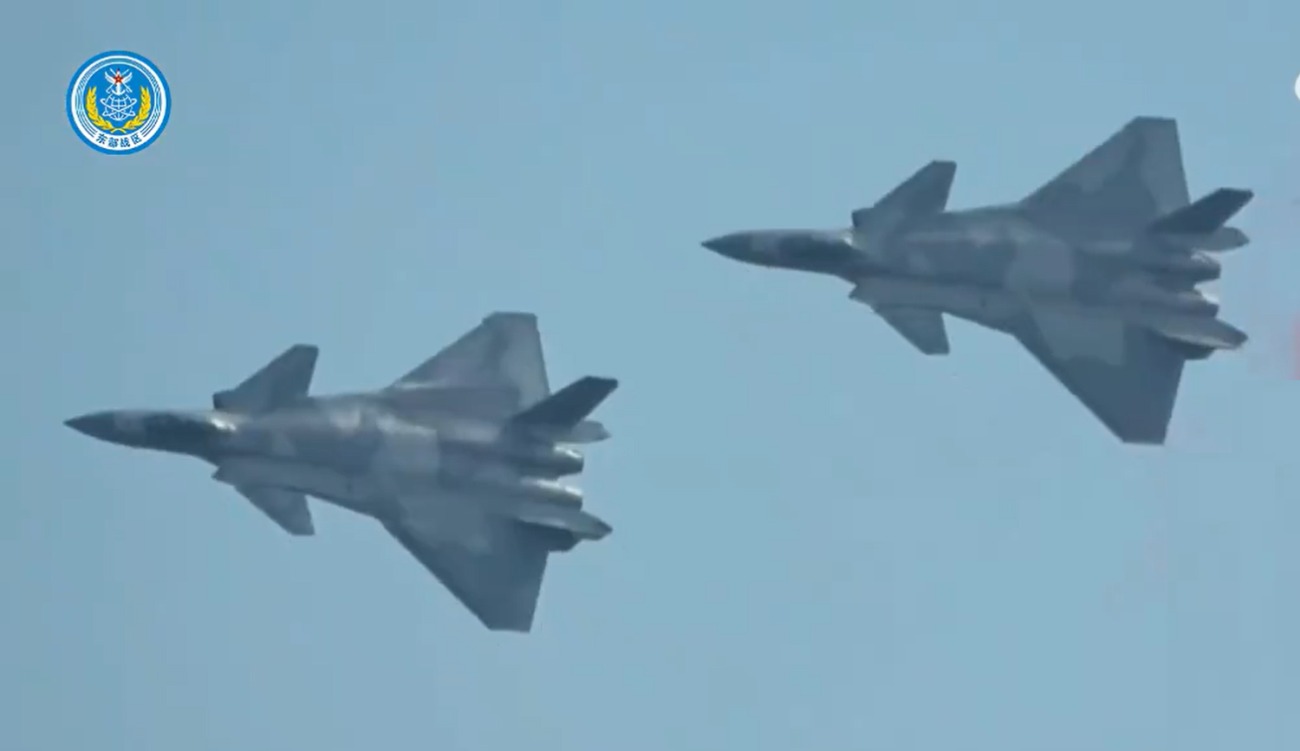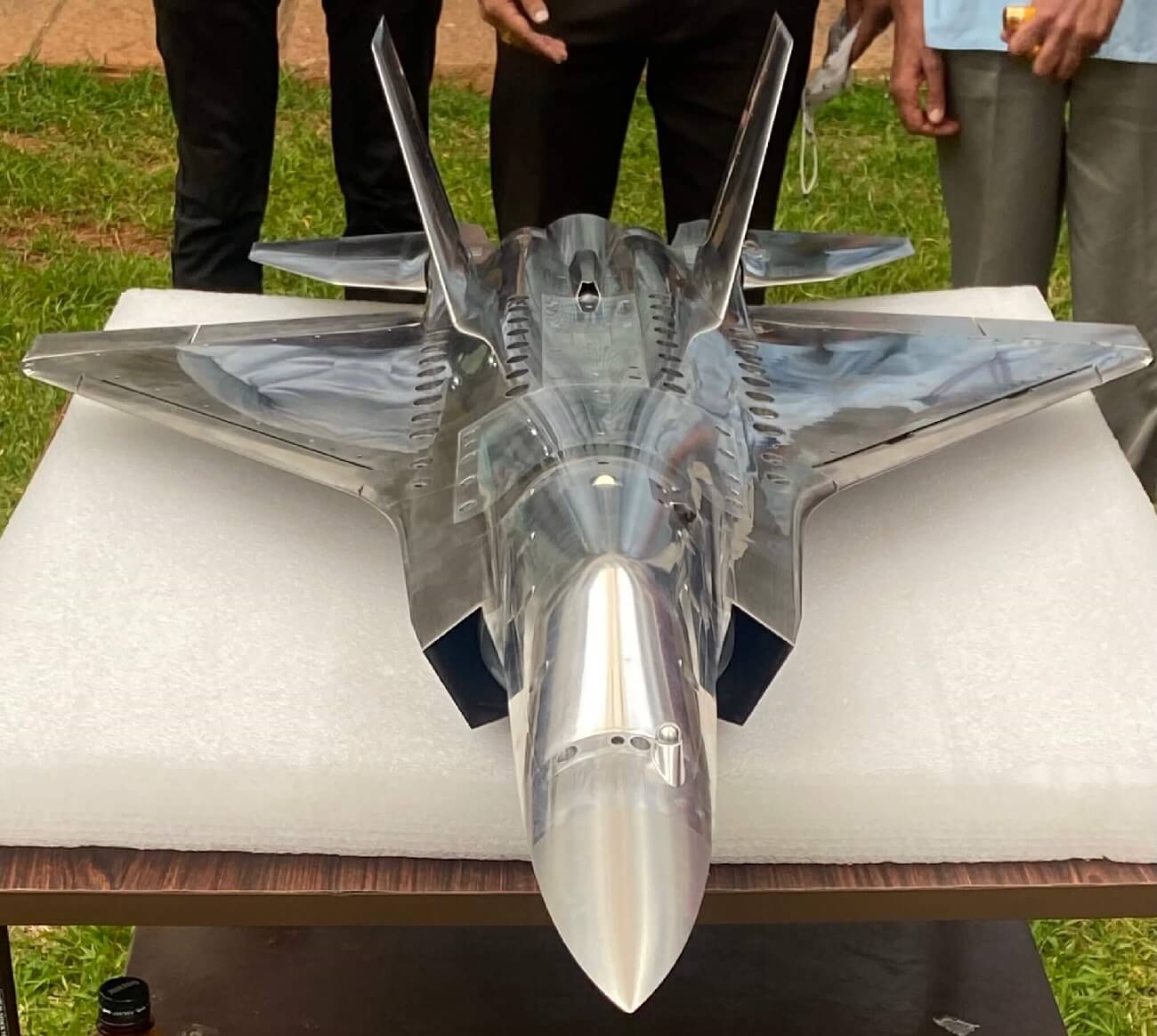India has an ambitious lineup to achieve self-reliance in building indigenous fighter jets. Apart from the variants of Light Combat Aircraft, the Indian defense industry has been given the government’s nod to develop the fifth-generation Advanced Medium Combat Aircraft (AMCA) in 2024. However, the fact remains that by the time the AMCA starts flying, China will have fielded 1000 J-20 ‘Mighty Dragon’ 5th-generation jets.
After being the second country in the world to have an operational 5th-generation fighter jet in its fleet, China is already moving to develop 6th-generation fighter jet technologies.
J-20 is a twinjet all-weather stealth 5th-generation fighter aircraft designed by China’s Chengdu Aerospace Corporation of the People’s Liberation Army Air Force (PLAAF). It took to the skies for the first time on January 11, 2011, and was officially revealed in 2016.
The Mighty Dragons entered service in 2017, and PLAAF already has over 200 fighter jets in its fleet. The goal is to take the number to 400 by 2027 and 1,000 by 2035. China has deployed at least six J-20s less than 150 kilometers (km) from the de facto border with India in the Sikkim region.
The J-20 is a single-seater, multi-role stealth fighter designed to combine both air superiority and precision strike capabilities. Presently, the IAF has its fleet of 36 French-built Rafale combat jets to counter J-20s. Shigatse, where the PLAAF’s J-20s have been reportedly deployed, is located less than 290 km from Hasimara air base in West Bengal, where the IAF has based its second squadron of 18 Rafale jets.
AfriPrime App link: FREE to download...
https://www.amazon.com/Africircle-AfriPrime/dp/B0D2M3F2JT
China is still struggling with the engines of its fighter jets. However, as the first country in Asia to field an operational stealth aircraft, it will have a lead of nearly one and a half decades to mature its 5th-generation fighter jet capabilities when the Indian AMCA is planned to enter service.
“India is still evolving technologies for its fifth-generation aircraft, the AMCA. India is also still a ‘work-in-progress’ in technologies related to aero-engines, AESA radars, EW systems, modern weapons, actionable Artificial Intelligence (AI), and other advanced avionics,” Air Marshal Anil Chopra (retired), an Indian Air Force (IAF) has written.
Undoubtedly, there has been a clamor in the military experts in India for India to expedite its timeline.
The Cabinet Committee on Security (CCS) sanctioned Rs. 15,000 crores ($1.9B) to design and develop AMCA only in March 2024. The Aeronautical Development Agency (ADA) under the Defense Research and Development Organisation (DRDO) will be the nodal agency for the development of the aircraft. The aircraft will be manufactured by state-owned Hindustan Aeronautics Limited (HAL).
The HAL is already working on augmenting its capability to manufacture more LCA Mk1A to meet the IAF order. After that, the work will be done on LCA MK 2. Then, it will be the turn of AMCA.
The ADA has been assertive that the 25-ton twin-engine AMCA will be at par or even superior to other 5th-generation stealth fighters globally when it materializes.
“At current technology levels, going alone will not be a practical option for India. India must hasten the LCA Mk2 and AMCA and get its MUM-T “Loyal Wingman” technology right. Many countries have collaborative routes. Should India join the GCAP or the French-led FCAS program? These are hard calls to make. Collaboration means sharing costs and risks,” Air Marshal Chopra ruminates.

The Choice Between Self-Reliance & Capability
To add to the IAF’s predicament, a large chunk of its fleet comprises third-generation fighter jets, even as its two major adversaries in Asia have been rapidly inducting and deploying newer fighter jets. India’s bête-noir Pakistan could possibly acquire a fifth-generation fighter before AMCA.
Turkey announced in 2023 that it is starting negotiations with Pakistan to make it an official partner in combat aircraft development. The culmination of a series of bungling by the Indian defense establishment and top brass of the IAF over the years has resulted in the force staring at two lost decades of technological advancement.
Delayed acquisition and slow development of indigenous fighter jets have resulted in the IAF with dwindling units of aging fighter jets to defend the Indian airspace. As reported by the EurAsian Times, the IAF now has more surface-to-air missile units than fighter jets.
India’s quest for the next generation of fighter jets began almost 15 years ago when it joined hands with Russia to develop the Fifth Generation Fighter Jet (FGFA).
The DRDO has often been criticized for setting up ambitious timelines only to miss them. The Project Director of AMCA, Dr. AK Ghosh, had stated during DefExpo-2022: “Once the project sanction is received, the prototype can be rolled out in three years and the first flight in one to one and half years after that.” However, the IAF received the claim with a dollop of salt.
In November 2022, the Chief of the Air Staff (CAS), Air Chief Marshal VR Chaudhari, advised“prudence.” He recommended foreign tie-ups as a fallback for developing “alternative systems and sensors” in case Indigenous development slips off the timeline.
Following the remarks from the IAF Chief, DRDO Chairman Samir Kamat announced a redone timeline on February 14, 2023. As per it, the first flight of the AMCA “may take seven years, and the induction can be done in ten years from now.” The first flight timeline had already been pushed back from 2027 to 2030, and the induction was slated for 2035.
“Based on their track records and their proclivity for over-projection, there can be little doubt that DRDO and HAL (Hindustan Aeronautics Limited) leadership will be forced to push back timelines and seek performance concessions due to technology shortfalls during the AMCA project,” IAF veteran Vijaindra K Thakur wrote in an article

An instance of these over-ambitious timelines is the Turkish KAAN fighter jet, whose development began at the same time as the AMCA project. The core group to develop the Indian stealth fighter was formed in 2009 with five defense scientists—Ashish Kumar Ghosh, Krishna Rajendra Neeli, MB Angadi, AK Vinayagam, and Fairoza Naushad. Turkey’s Defense Industry Executive Committee (SSIK) decided to develop a next-generation air-superiority fighter in December 2010.
While the Indian project is still on the drawing board, the Turkish Aerospace Industry’s aircraft has already undertaken its maiden flight.
Thakur adds: “While giving its go-ahead to the project, it is essential that the CCS be aware of the pitfalls and remain alert to the impact of project delays on the combat capability of the IAF. The nation can afford to wait for the AMCA but cannot afford to let its guard down.”
The Modi Government 3.0 must maintain a balance between self-reliance or ‘Atma-nirbharata’ and the capability of the armed forces. The military’s lethality and capability should be commensurate with the security challenges faced by the country.
AfriPrime App link: FREE to download...


